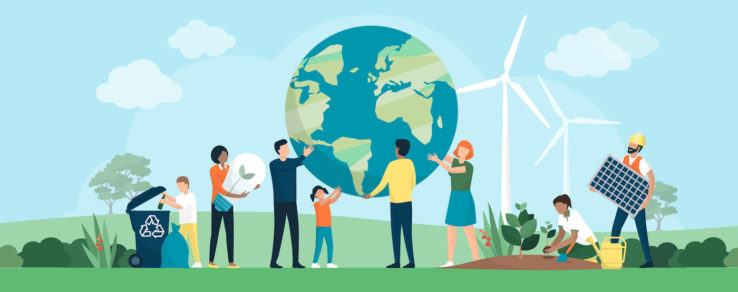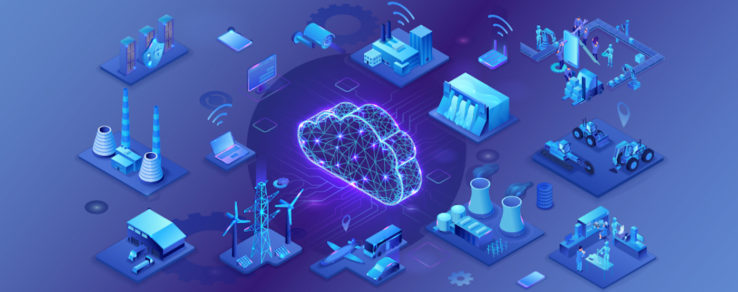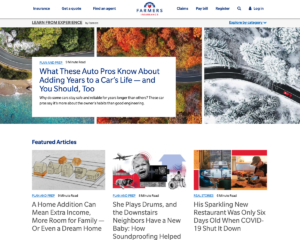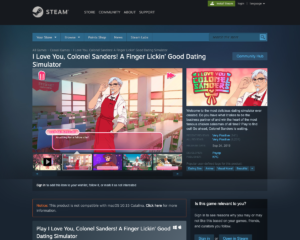Consumers are increasingly concerned about climate change, and many state regulators have set ambitious renewable energy goals for utilities. The planet’s temperature has been rising for decades, and even the Paris Climate Agreement targets a maximum 3.6 degrees Fahrenheit temperature rise in this century. However, some believe that cutting planet-warming emissions is not enough to stave off disaster. Thus, enters geoengineering.
Geoengineering is “the deliberate large-scale intervention in the Earth’s natural systems to counteract climate change,” according to the University of Oxford. This is generally accomplished one of two ways:
- Sucking carbon dioxide out of the sky, aka “carbon removal” or “direct air capture,” so the atmosphere will trap less heat.
- Reflecting more sunlight away from the planet so less heat is absorbed in the first place.
The question remains: Do we utilize geoengineering to offset the negative effects of climate change? Read on to learn more about the different categories of geoengineering, as well as the implications of these environmental interventions.
Direct Air Capture
The oceans absorb a lot of CO2. David Keith, a Harvard University physicist, has developed a patented “negative emissions technology” using chemistry to remove carbon dioxide directly from the atmosphere. In 1995, British researchers suggested fertilizing the oceans with iron to stimulate the growth of CO2-absorbing algae. Phytoplankton algae would soak up CO2 from the water and cause more to be absorbed from the atmosphere. There have been over a dozen major iron-fertilization experiments in the open ocean since 1990.
Reflecting Sunlight
Volcano eruptions have cooled the earth slightly in the past. Concern over “nuclear winter” had scientists studying solar geoengineering back in the 1940s and 1950s. More modern ideas include setting up sun shields in space and floating billions of white objects on the oceans to reflect sunlight.
Dispersing microscopic particles (typically sulphates) into the stratosphere by airplanes to scatter sunlight (4,000 to 10,000 flights a year) was an idea first proposed in 1965. To protect the arctic ice cap, scientists have conceived the idea of deploying tall ships to pump salt particles from the ocean into polar clouds.
Recent attempts at geoengineering
Russian scientists conducted a “stratospheric injection” experiment in 2009 and Harvard University and University of Washington scientists are separately planning their own similar experiments soon. There is a direct air capture (DAC) facility in Zurich, developed by the Swiss company Climeworks, that removes CO2 from the atmosphere using a sorbent filter. Waste heat from a local waste incineration plant drives the process.
Carbon Engineering, a Bill Gates-backed company, has been testing a liquid potassium carbonate sorbent DAC technology since 2015. Coca-Cola aims to use Global Thermostat’s DAC to source CO2 for its carbonated beverages.
A Center for Negative Carbon Emissions was founded in the School of Sustainable Engineering and the Built Environment at Arizona State University in 2014. Many utilities see Carbon Capture and Storage (CSS) as an opportunity to significantly lower emissions from carbon intensive generation assets. CSS is a proven technology, though not yet adopted at scale.
Issues and concerns with geoengineering
Possible downsides of geoengineering include damaging the protective ozone layer, altering global rainfall patterns, reducing crop growth and acidifying the oceans. The effects that algae blooms could have on the marine food web is unknown.
Other implementation issues to consider include:
- Global (planet-scale) or local (ice sheets) operations?
- Who would be in charge of such planetary endeavors?
- How do you settle on a single global average temperature?
- Is geoengineering playing “God”?
- Scaling up experiments is risky. Can we go back if results are unacceptable?
- Is the geoengineering risk greater than negative climate change effects?
- Could a focus on geoengineering delay direct greenhouse gas emissions reductions?
Some say that we have been unintentionally geoengineering our climate for more than a century, so why not intentionally geoengineer it now? Others argue that blithely dumping another 40 billion tons of CO2 into the atmosphere every year is akin to government deficit spending. The attitude is, “Let future generations deal with it.”
Solar geoengineering is attractive because it is relatively inexpensive, works immediately and doesn’t require global cooperation for local projects. Alternatively, restoring forests, an effective “natural” climate solution, may be the path to follow. The World Resources Institute estimates that a degraded forest area twice the size of Canada is available for reforestation globally.
With the numerous options available today, it is apparent that more research needs to be done to determine if geoengineering is the right solution to combat climate change.





